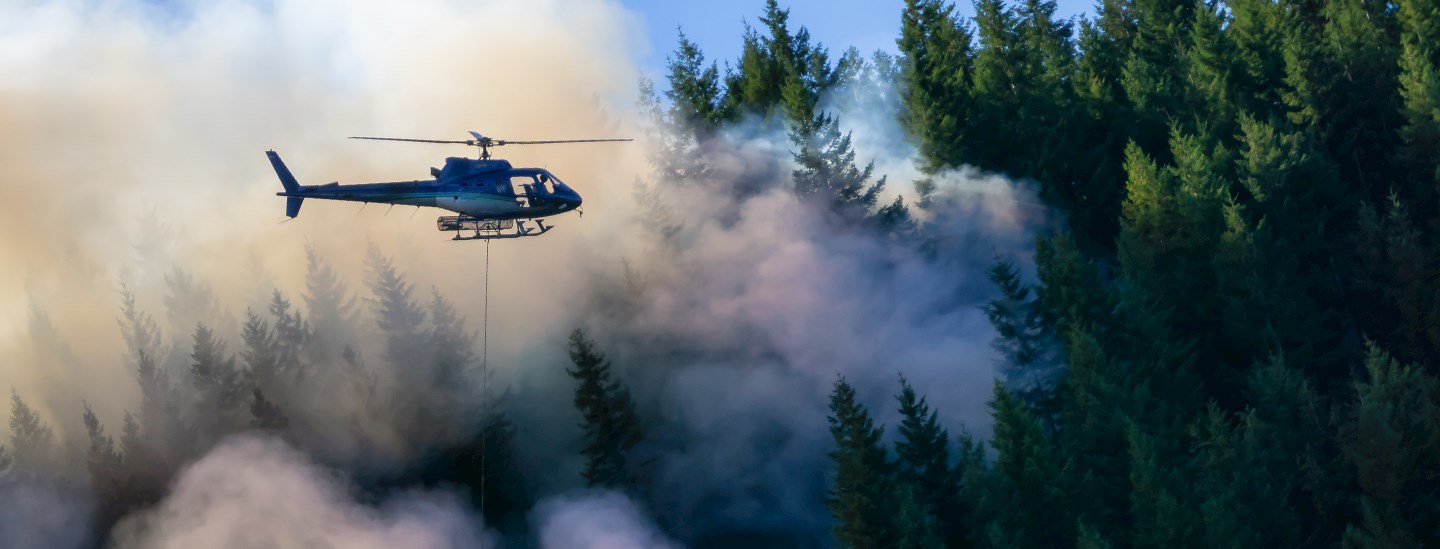Wildfires can disrupt all aspects of life, including business plans. Ensuring that you are ready for all types of business interruptions, including natural disasters like wildfires, means you will be prepared for and ready to recover after the fire subsides. Having a business continuity plan that focuses on wildfire recovery will ensure a smooth transition from uncertainty to business-as-usual. Our wildfire preparedness guide will offer advice on planning, preparation, evacuation and filing an insurance claim after a wildfire.
- Pre-Planning your Business' Safety before a Wildfire Occurs
- Preparing for a Wildfire
- Evacuation Preparation Steps during a Wildfire
- Post-Wildfire Recovery Guidelines for your Business
- Filing a Commercial Insurance Claim due to Wildfire Damage
Pre-Planning Your Business' Safety before a Wildfire Occurs
Planning and preparing can make a big difference in staying safe during and rebounding after a wildfire. Recovering quickly from such an event requires advanced planning, knowledge of what to do in the event of a wildfire, and how to report any losses.
In anticipation of such a wildfire, start talking to your Gallagher representative as early as possible to be sure you secure appropriate insurance coverage, update current location schedules, and understand what is covered with your current property policy.
Preparing for a Wildfire
Awareness and preparation are key factors in minimizing risk during a wildfire. By understanding your vulnerabilities and proper planning, you can reduce any detrimental effects to your organization and employees. The best protection is to have a solid wildfire disaster plan in place.
Meet with your emergency response team in preparation for an event.
- Be sure your Business Continuity Plan has been updated and communicated, as well as your Business Interruption and Extra Expense Claims.
- Review, revise and distribute your internal communication plan to ensure your employees know what to do and where to go for information if a wildfire occurs.
- Ensure up-to-date Exterior and Interior Asset Inventories are documented and photos and/or video are included.
- Ensure your Emergency Listings are up-to-date.
- Update your Crisis Communications Planning Checklist.
- Update your Social Media and Disaster Communication Plan.
- Make sure your office is equipped with items on the Disaster Supply List.
- Review your Wildfire Preparedness Checklist.
- In the event of an evacuation, be prepared to bring essential items.
Evacuation Preparation Steps during a Wildfire
When a wildfire evacuation is anticipated, follow the steps below to give you and your employees the best chance of surviving a wildfire.
- Heed evacuation warnings. It may seem like you have time, but conditions can change in an instant, making evacuation more difficult. In addition, leaving when ordered by local officials clears the roads so firefighters can get the necessary equipment in place to fight the fire.
- When evacuating, prepare yourself, employees and tenants for exposure to heat and embers. If possible, wear long pants made from 100% cotton, a long-sleeved shirt, heavy boots or shoes, a dry bandanna for face cover, and goggles or glasses to protect your eyes.
- If possible, shut off the gas to prevent an ignition source.
Post-Wildfire Recovery Guidelines for your Business
After receiving the "all-clear" signal from your local agencies or emergency personnel, you can begin your post-wildfire procedures. Review your Business Interruption and Extra Expense Claims list on how to assess possible business interruption impacts, as well as potential claims coverage. Bring your Preliminary Damage Assessment Report and be ready to take pictures or video of damage to the property. It's important that your claims handler receives this information as soon as possible.

